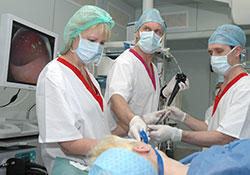Data and statistics

Arkadij Nikolaev
Population growth, ageing societies, and changing disease patterns are expected to drive greater demand for well-trained health workers in the next 15 years. The global economy is projected to create around 40 million new health sector jobs by 2030, mostly in middle- and high-income countries. But despite the anticipated growth, there will be a projected shortage of 18 million health workers needed to achieve the UN Sustainable Development Goals (SDGs) in low- and lower-middle-income countries, fuelled in part by labour mobility, both within and between nations.
More specifically the Global Strategy on Human Resources for Health: Workforce 2030 reports that shortages can mount up to 9.9 million physicians, nurses and midwives globally by 2030. This reinforces the findings of the WHO/Europe core health indicators suggesting that the number of health workers in the region may not be sufficient to cover the future health needs of an ageing population, despite an increase of health workers in the past decade.
Notable health workforce facts from the Core Health Indicators in the WHO European Region
- Health workforce imbalances and shortages are a major concern in the European Region. Although the number of physicians and nurses has increased in general in the region by approximately 10% over the past 10 years, it is unlikely that this increase will be stable and sufficient to cover the needs of ageing populations. Simultaneously, inequalities in the availability of physicians and nurses between countries are large: there are 5 times more doctors in some countries than in others. The situation with regard to nurses is of even greater concern, as nurses play a significant role in the care of the elderly; however, the data show that some countries have 9 times fewer nurses than others.
- In order to strengthen primary health care in the region, the proportion of general practitioners (GPs) among all physicians should be increased. However, the majority of physicians in Europe are specialists: the specialist to GP ratio is 1 to 3.2, a relation that has been constant over the past decade.
- The right skills-mix of health workers is indispensable for effective and efficient health care delivery. Although there is no standard for the optimal composition of a health workforce, the nurse to physician ratio varies considerably across the Region, from below 1 nurse to every physician in Georgia and Greece and between 4 and 5 nurses per physician in Finland and Ireland.
- The age and gender structure of the health workforce in Europe is changing. Physicians are getting older, and nearly one out of three physicians is more than 55 years old. This is an increase of 6% over the past 7 years. In order to guarantee at least the same availability of physicians, the number of medical graduates must increase in the future. The proportion of female physicians has increased and 52% of physicians today are female, an increase of 4% over the past 10 years. This has important implications, as women tend to work shorter hours and have slightly shorter careers.



